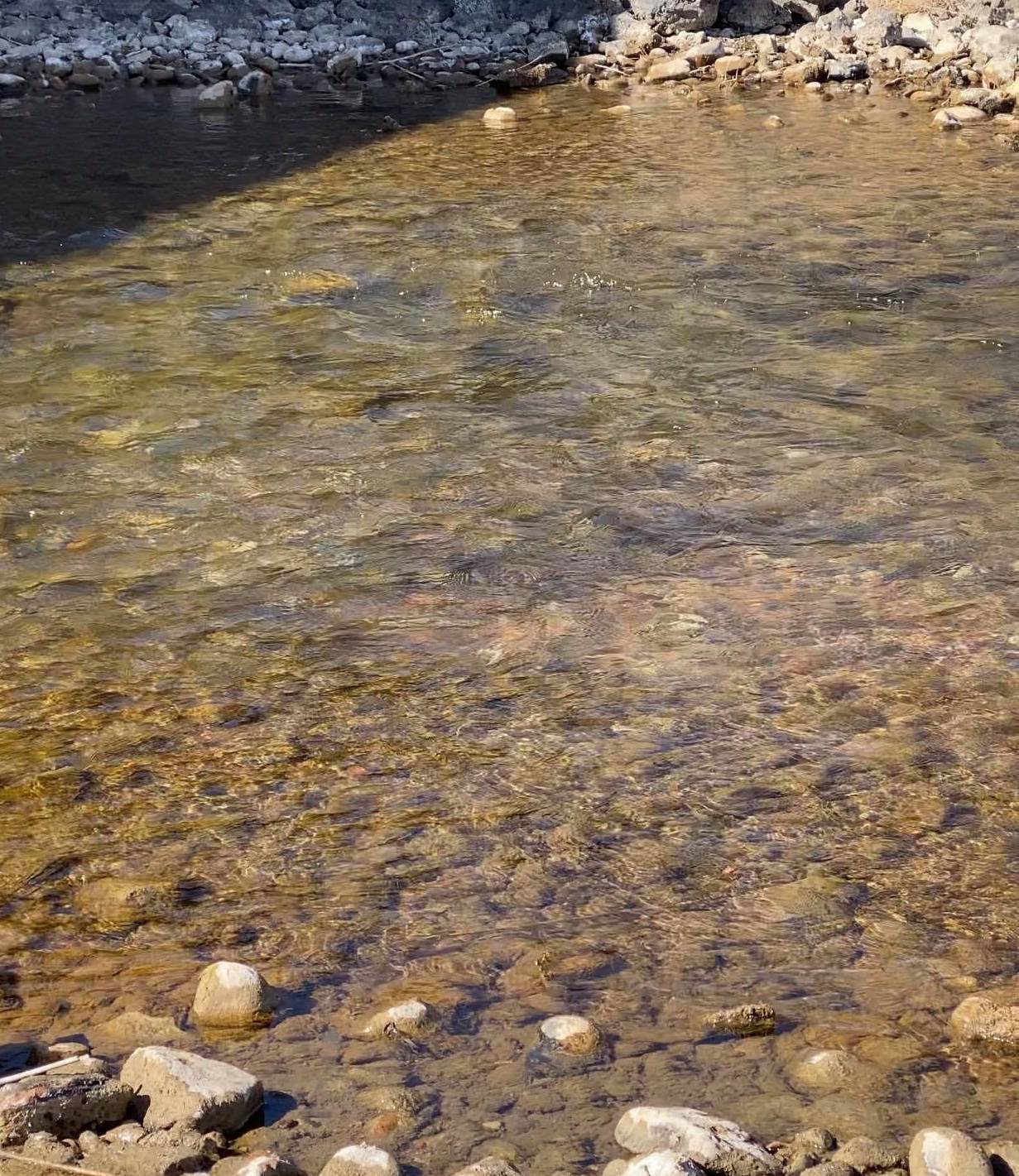The Spawn is On
It’s that time for spring’s great rebirth and rejuvenation. Spring in Colorado means spawning rainbow trout — and it means a new conviction to treat the fish right. The spawn is on. This issue is just black and white: stay off the redds.
So what does that mean — stay off the redds — and why is it important?
The trout spawning process (for browns in the fall and rainbow in the spring) begins with the female building “her nest,” the spawning bed, the redd. The redd is a slight depression in a shallow, gravel- covered section of a riverbed. The female fans her tail against the small rocks in order to clean the debris from the area. You can spot the redds relatively easily. They are a nicely cleaned area in a shallow spot and can be found just about anywhere on the bed of the river – near the bank or further out. After the female cleans the spawning bed, it looks almost like a cobblestone road. The gravel or small stones of the redd is lighter in color, and it may stretch for several feet, sometimes reaching a length of a few yards.
What Happens on the Redd
When the redd is made, the female moves upstream and lays her eggs in the gravelly bed. A male trout (sometimes two) then fertilizes the eggs by covering them with his milt. Once the male is done, the female covers them with more gravel and small rocks. They then head off downstream.
During the spawning time, the redds are vulnerable for two reasons.
First, the female’s energy is being used to lay her eggs. She’s weaker. Similarly, the male is involved in his part of the reproductive cycle.

The fish are vulnerable. Landon Mayer, who has worked tirelessly with other Colorado guides, outfitters, and the Department of Parks and Wildlife, says
“On average, the female — a giant brown, say a 30” female — will lose, in addition to the weight of the eggs, 7 pounds in body mass in two months from spawning. That’s how much energy is expended.
Males will lose 4 to 5 pounds because they are expending so much energy chasing the redds, chasing other fish, shooting their milt.”
Spare the Spawn
This is not a “challenging catch” at this time.
Some anglers stoop to the level of merely snagging or foul hooking the spawning fish. Anglers who choose to target spawning fish are out for the trophy and not the challenge. Their tools? Minimal technique and questionable ethics.
Some anglers stoop to the level of merely snagging or foul hooking the spawning fish. Anglers who choose to target spawning fish are out for the trophy and not the challenge. Their tools? Minimal technique and questionable ethics.
The redds are also vulnerable to anglers wading on top of them. In some ways, the redds are quite inviting; they are in shallow water in an area that is free of large rocks. All of that is nature’s plan! It’s a fragile area, though.
Imagine walking in a huge robin’s nest smashing the light blue eggs with your big ol Simms boot. Imagine sloshing through that nest and watching cracked and smashed eggs being tossed to the wind.
Unimaginable? We sort of cringe at the thought, right?
When an angler walks on the redds, he is obliterating and scattering the next generation of the very trout he would like to catch. He is suffocating the fish by stirring up the silt that then covers the eggs, depriving them of clean, oxygenated water.
If you consider fly fishing an art … a sport … a science…
if, like the characters in A River Runs Through It, you consider fly fishing a religion …
… there is no room for casting to spawning fish or wading on the redds.
None.
Read more:
Landon Mayer’s thoughts: “Protect the Spawn”
Kirk Deeter’s article in Field and Stream, “Don’t Pull Trout Off Redds”



[…] March, and with it more spawning, the egg pattern will be very enticing. A quick reminder here to stay off the redds regardless of […]
[…] staff — all who are experienced anglers — and our guides all convey the same message: spare the spawn. Imagine our surprise, then, this morning when we discovered that the flow on the Arkansas River […]